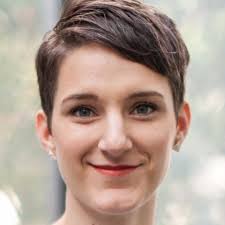Breastfeeding vs. formula: the topic has become something of a parenting battleground is how to feed a baby in the first year of life. For parents expecting a new baby, keeping costs under control can be a big factor.
There appears to be a clear winner on that front: The U.S. Surgeon General states that parents can save $1,200 to $1,500 to breastfeed rather than formula feed an infant in the first year of the child’s life.
But is breastfeeding inherently cheaper than formula feeding? We dove into the numbers to compare the full costs of nursing vs. formula feeding your baby to find out.
The costs of formula feeding: $1,100 or more for the first year
There’s no doubt that baby formula adds up. Parents could typically expect to pay around $1,100 or more on an affordable formula, bottles, and other supplies. The bare minimum new parents will spend in the first year is $800, or up to $2,500 with a pricier formula and other purchases.
Here’s a breakdown of the costs of formula feeding your baby:
- Formula: The cost of formula to make a liquid ounce ranges from $0.08 to $0.19 or higher. Most babies will consume between 9,500 and 12,000 ounces of formula in their first year of life. For a baby that eats less, you’re looking at around $750 to $1,800, depending on the formula you choose. If your baby eats more, your range is around $950 to $2,250.
- Bottles: Baby bottles are a must for formula-fed babies, and these typically cost around $5 each. Parents can expect to spend at least $50 or more on bottles in the first year, as they may get lost or need replacing.
- Bottle sanitizers (optional): Sanitization is an important step of feeding babies, and bottle sanitizers can simplify this task. They aren’t strictly necessary, but many parents find they’re worth the investment of $20 to $50.
- Bottle accessories (optional): Other items can make formula feeding easier. Bottle brushes cost $3 to $7 each, and a bottle drying rack runs $ to $15. If your baby prefers warm milk, a bottle warmer runs $25 to $50.
The costs of breastfeeding: $950 or more for the first year
In the discussion of formula vs. nursing, breastfeeding is often touted as being basically free. But — that’s not exactly true. While you aren’t directly paying for your baby’s milk by the ounce, breastfeeding still comes with added costs to new moms.
By our estimations, parents who breastfeed can expect to spend around $950 in the first year. Here’s a breakdown of nursing-related costs:
- Higher grocery bill: This is one cost that’s often overlooked when comparing formula costs with breastfeeding. Nursing mothers need to eat an extra 450 to 500 calories per day, according to the Centers for Disease Control. While that’s not a significant increase, it’s enough that you might need to spend $10 to $25 more a week ($550 to $1,300 per year) at the grocery store to add more calories while keeping your diet healthy and balanced.
- Lactation support (optional): Attending a breastfeeding class can be a big help for helping expecting parents get familiar with nursing, and these can cost as little as $20 for a couple. Or you might hire a lactation educator or consultant, which typically costs $150 to $350 per hour for a home visit.
- Breast pumps and bottles (may be optional): Breast pumps can range from $25 for a manual version, $70 or so for a less-costly electric pump, all the way up to $200 or more for a hospital-grade pump. You’ll also need breast milk bags (about $15 per 100), as well as bottles and nipples for feeding (about $25 for a set).
- Nursing supplies (optional): Women might purchase additional items to make nursing easier and more comfortable, too. Some of these nursing-related purchases include nipple cream, a set of nursing bras, reusable nursing pads, a nursing pillow and extra covers, and a bed rest pillow to comfortably sit up and nurse in bed. In all, these could add around $150 to your costs.
Indirect costs of nursing or formula feeding
There are other indirect costs associated with each option, too. For breastfeeding, one of the biggest costs in the time it takes to nurse. Depending on the baby’s age and nutritional needs, nursing parents can spend 2 to 8 hours a day nursing. And unlike with formula, breastfeeding is a one-person job that can’t be handed off or shared.
Having to work around pumping at work can complicate a mother’s return to the workforce after maternity leave. The combination of pumping and taking on a more primary parenting role can slow career progression and even block opportunities for advancement. In fact, 29% of moms with infants say they worried that pumping at work would negatively impact their careers, according to an Acelleron report on breastfeeding women in the workplace.
By comparison, formula feeding can simplify a return to work and allow for more flexibility with feeding and caregiving. For some parents, that’s worth any extra costs it might come with.
Choosing to formula feed, on the other hand, can lead to indirect costs as well. The health benefits for breastfeeding mean that forgoing this increases the likelihood of some health issues, from asthma to gastrointestinal disorders. Talk to your obstetrician or pediatrician about formula to better understand how this might impact your baby’s health and your health care costs.
Figure out what baby costs your insurance covers
Generally, coverage is provided more widely for breastfeeding supplies and services. Under the Affordable Care Act, health insurance policies are required to cover a range of breastfeeding costs for new parents. This includes lactation consulting, breastfeeding classes, as well as equipment such as breast pumps or bottles.
Some parents might be able to get their insurance to cover formula costs, as well, if their child needs a specific formula for medical reasons. This will typically depend on the state you live in, as only 20 states require health insurers to cover a hypoallergenic or specialized formula.
The specifics of what your plan covers will depend on your policy, however. Discuss your needs and coverage with your doctor and insurer to find the best options for your family.
Bottom line: Choose what works for your family
Our comparison shows that in the battle of breastfeeding vs. formula feeding, both options come with costs — and there’s no clear winner.
And, of course, not every family gets to make this choice, either because they’re adopting or otherwise unable to breastfeed.
How much you pay or save really will depend on your family’s circumstances and needs. Seek out the best option to fit your family’s values and needs while keeping your baby fed. With some thought and research, you can find the right balance of convenience, cost, and nutrition for your new baby.















1 Comment
Anonymous · January 19, 2022 at 1:10 pm
Appreciate your breakdown of the ‘hidden’ or omitted costs of both types of feeding.